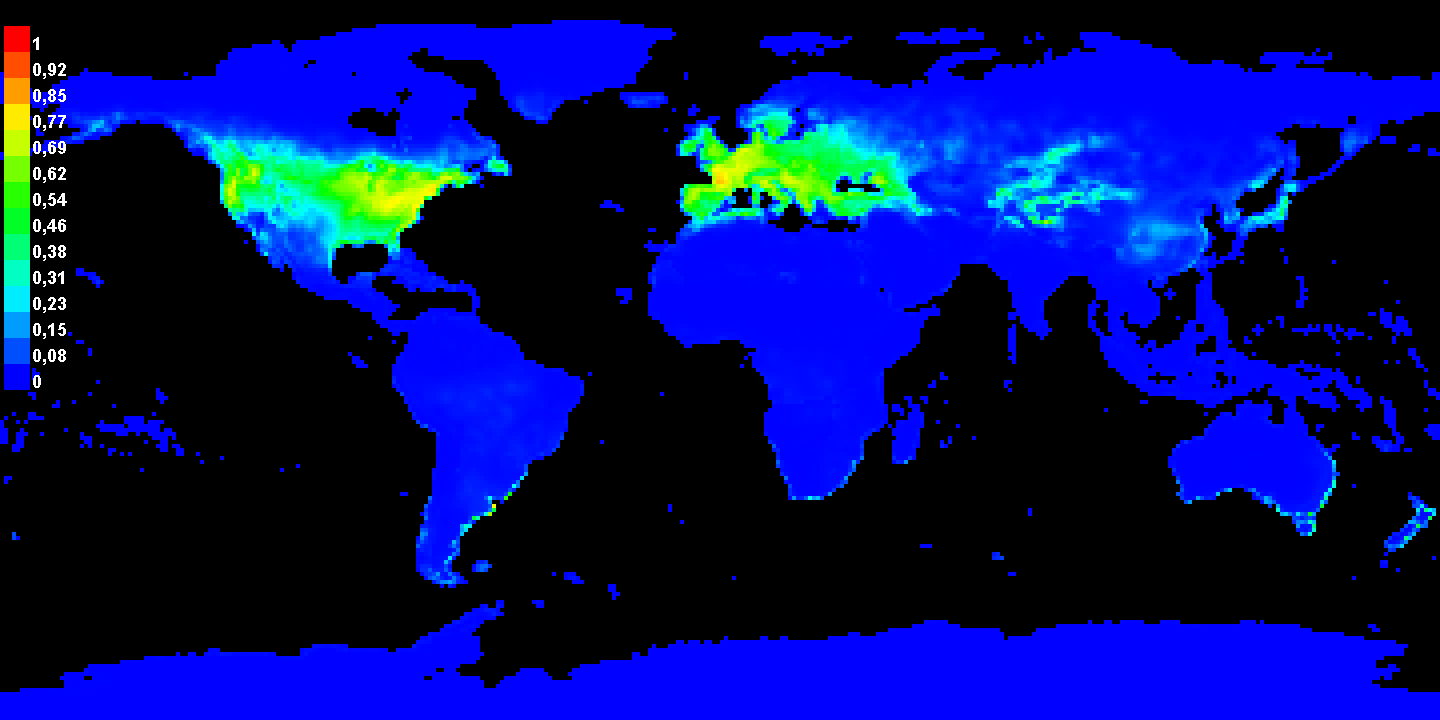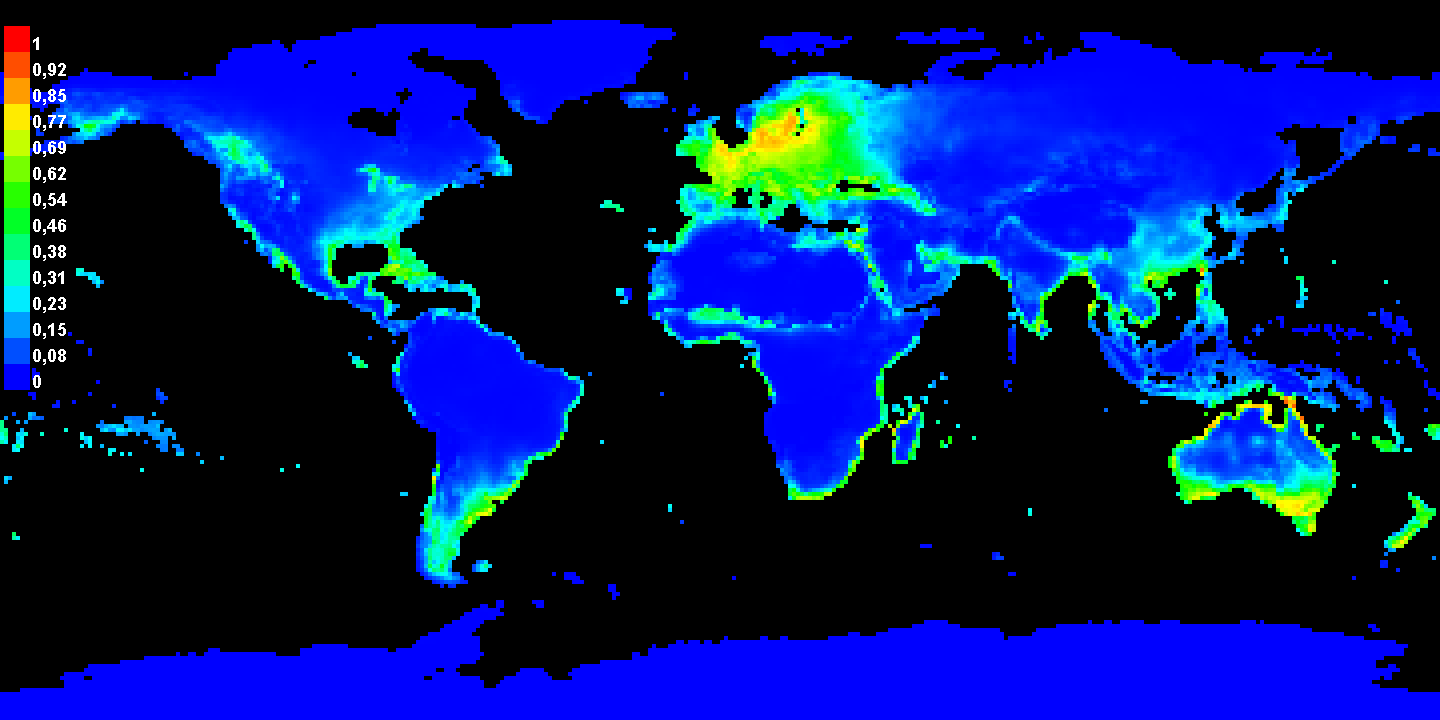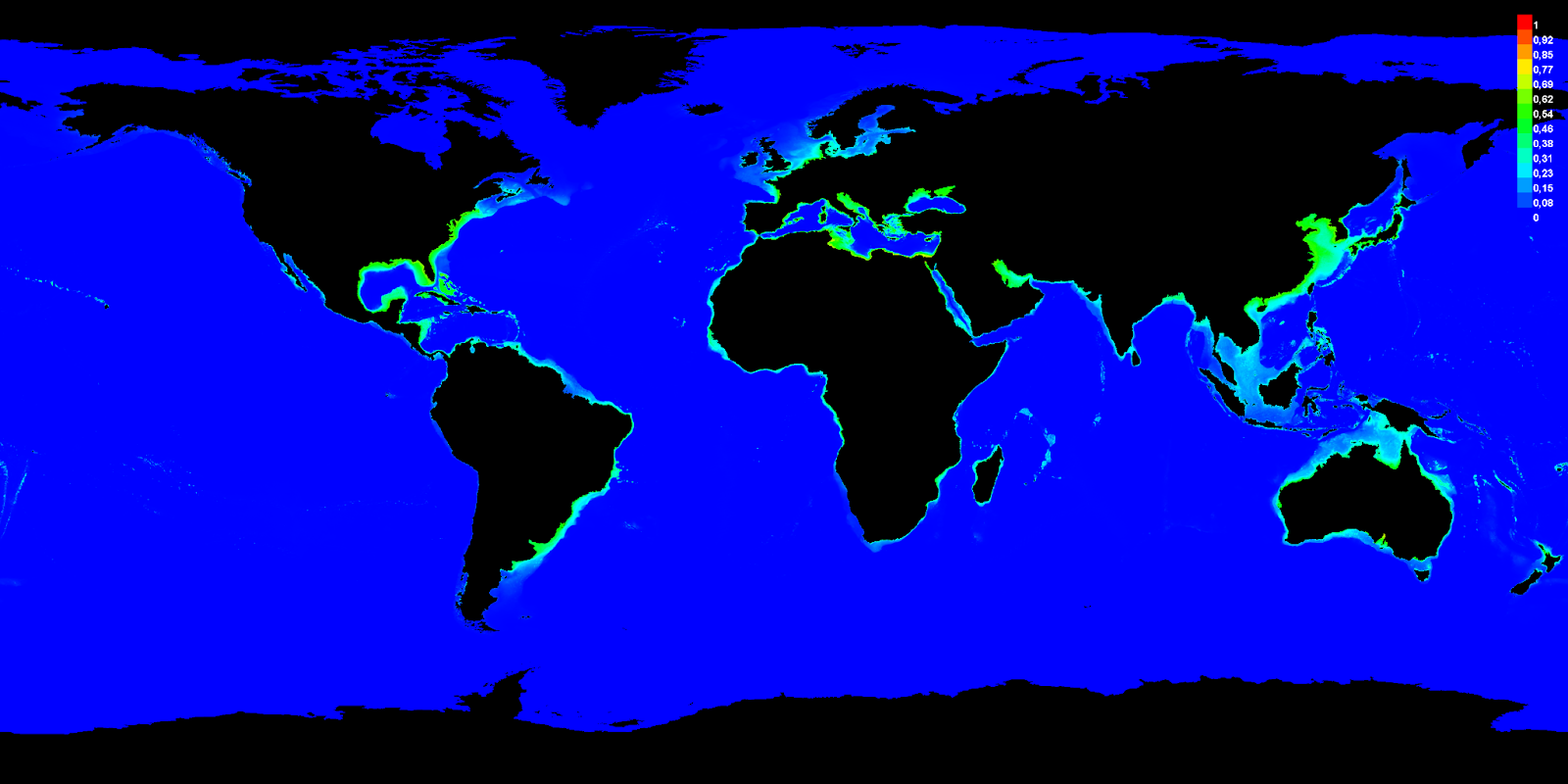WP3 Implementation of Risk Management Model for Western Balkans
WP3: Summary of results
The risk posed by aquatic NNS is an emergence that must be taken under consideration. By a preliminary analysis, it emerged that in the WBs there is a lack of availability and accessibility of current policies and educational practices in the field of risk assessment of aquatic NNS species. Thus, the aim of the WP3 was to provide to the Western Balkan Partners useful tools to be able to comprehend the risk posed by aquatic NNS on economy, education, and public society.
In the first part of the WP3, the RiskMan Consortium carried out a deep literature review about the current knowledge on the risk management models within the framework of the concepts of NNS, risk management and the methods suggested to perform the best models. By this review it emerged that decision-support tools are essential instruments to the risk analysis of NNS because they assist in the identification (screening) and assessment of risks associated with NNS as well as providing support to decision-makers involved in their management.
Thus, using the modles and instruments available in the literature, the following decision tree was preliminary proposed to summarise to summarize the risk associated to the NNS in WBs.
.png)
FROM THEORY TO PRACTICE: RISK SCREENING AS THE FIRST STEP IN RISK ANALYSIS IN WBs
The first step in the risk analysis process is the screening of potentially invasive NNS, that aim to identify which species are likely to be invasive (and therefore require a comprehensive assessment of risks) and which are less likely to be invasive (and therefore are less likely to require detailed analysis).
The RiskMan Consortium suggested an innovative double-steps approach for the implementation of Risk Management for all stakeholders by the integrative use of two different methodologies:
-
the Aquatic Species Invasiveness Screening Kit (AS-ISK) to assess the risk of invasiveness of NNS and
-
Maximum Entropy method (MaxEnt) used to investigate the potential distribution and habitat suitability and predict the distribution of aquatic NNS in WBs.
The integrated use of both methodologies was tested for some aquatic NNS selected from the databases of aquatic NNS for WBs developed within the WP2.
Double-steps approach for the implementation of Risk Management of aquatic NNS for WBs
1) Risk screening by AS-ISK
AS-ISK v.2.3 tool was used to assess the risk of invasiveness of some aquatic NNS in the study area. For the assessment, the AS-ISK thresholds for Basic Risk Assessment (BRA) and BRA + Climate Change Assessment (CCA) were given according to Vilizzi et al. (2021) (reported in the following Table 1)
Table 1: AS-ISK thresholds for Basic Risk Assessment (BRA) and BRA + Climate Change Assessment (CCA) according to Vilizzi et al. (2021).
|
Group
|
Thresholds
|
|
BRA
|
BRA + CCA
|
BRA Very High thresholds
|
BRA + CCA Very High thresholds
|
|
Fishes and Lampreys (freshwater) (temperate)
|
15.9
|
16.0
|
30
|
36
|
|
Fishes and Lampreys (marine) (temperate)
|
19.5
|
31.5
|
-
|
-
|
|
Invertebrates (freshwater)
|
13.25
|
25.75
|
30
|
36
|
|
Invertebrates (marine) (temperate)
|
15.1
|
15.6
|
30
|
36
|
|
Plantae (freshwater)
|
24.5
|
12.5
|
-
|
-
|
A total of 18 species, from each of the 3 Partner Countries (Albania, Bosnia and Herzegovina and Montenegro) and for the neighboard Program Balkans Countries (Croatia and North Macedonia) were selected (Table 2) and risk assessment was performed: 11 freshwater fish, 2 marine fish, 2 freshwater invertebrates, 2 marine invertebrates and 1 freshwater plant species.
Table 2: Summary of the 18 aquatic NNS selected for the AS-ISK assessments
|
Group
|
Species
|
Area of risk assessment
|
|
Fishes and Lampreys (freshwater)
|
Ameiurus melas
|
Croatia
|
|
Fishes and Lampreys (freshwater)
|
Ameiurus nebulosus
|
Croatia
|
|
Fishes and Lampreys (freshwater)
|
Babka gymnotrachelus
|
Croatia
|
|
Fishes and Lampreys (freshwater)
|
Carassius gibelio
|
Croatia
|
|
Fishes and Lampreys (freshwater)
|
Lepomis gibbosus
|
Bosnia & Herzegovina, Croatia, Ohrid and Prespa lakes
|
|
Fishes and Lampreys (freshwater)
|
Neogobius fluviatilis
|
Croatia
|
|
Fishes and Lampreys (freshwater)
|
Neogobius melanostomus
|
Croatia
|
|
Fishes and Lampreys (freshwater)
|
Perca fluviatilis
|
Skadar lake (Montenegro)
|
|
Fishes and Lampreys (freshwater)
|
Perccottus glenii
|
Croatia
|
|
Fishes and Lampreys (freshwater)
|
Ponticola kessleri
|
Croatia
|
|
Fishes and Lampreys (freshwater)
|
Sander lucioperca
|
Albania, Bosnia and Herzegovina
|
|
Fishes and Lampreys (marine)
|
Lagocephalus sceleratus
|
Adriatic Sea (Montenegro)
|
|
Fishes and Lampreys (marine)
|
Pterois miles
|
Adriatic & Ionian Coastal Areas Albania
|
|
Invertebrates (freshwater)
|
Pacifastacus leniusculus
|
Bosnia and Herzegovina
|
|
Invertebrates (freshwater)
|
Physella acuta
|
Lake Ohrid and Lake Prespa (Macedonia)
|
|
Invertebrates (marine)
|
Callinectes sapidus
|
Adriatic Sea (Montenegro), Albanian coasts
|
|
Invertebrates (marine)
|
Rapana venosa
|
Albanian coasts
|
|
Plantae (freshwater)
|
Elodea canadensis
|
Croatia, Lake Ohrid, Lake Prespa (Macedonia)
|
The results of the AS-ISK assessments for the 18 NNS in the WBs are summarised in Table 3. All the species were assessed as Highly invasive or Very High invasive.
Table 3: Summary of results of AS-ISK assessments
|
species
|
Area of assessment
|
Thresholds
|
Outcomes
|
|
BRA
|
BRA + CCA
|
BRA
|
BRA+CCA
|
|
Ameiurus melas
|
Croatia
|
43.0
|
53.0
|
Very High
|
Very High
|
|
Ameiurus nebulosus
|
Croatia
|
43.0
|
53.0
|
Very High
|
Very High
|
|
Babka gymnotrachelus
|
Croatia
|
18.0
|
26.0
|
High
|
High
|
|
Carassius gibelio
|
Croatia
|
39.0
|
49.0
|
Very High
|
Very High
|
|
Lepomis gibbosus
|
Bosnia and Herzegovina
|
29.0
|
41.0
|
High
|
High
|
|
Lepomis gibbosus
|
Croatia
|
30.0
|
40.0
|
Very High
|
Very High
|
|
Lepomis gibbosus
|
Ohrid and Prespa lakes
|
25-51
|
35-61
|
High
|
Very High
|
|
Neogobius fluviatilis
|
Croatia
|
30.0
|
38.0
|
High
|
Very High
|
|
Neogobius melanostomus
|
Croatia
|
42.0
|
52.0
|
Very High
|
Very High
|
|
Perca fluviatilis
|
Skadar Lake (Montenegro)
|
43.5
|
39.5
|
Very High
|
Very High
|
|
Perccottus glenii
|
Croatia
|
37.0
|
47.0
|
Very High
|
Very High
|
|
Ponticola kessleri
|
Croatia
|
30.0
|
40.0
|
High
|
Very High
|
|
Sander lucioperca
|
Albania
|
16-28
|
4-38
|
High
|
very High
|
|
Sander lucioperca
|
Bosnia and Herzegovina
|
31.0
|
37.0
|
Very High
|
Very High
|
|
Lagocephalus sceleratus
|
Adriatic Sea (Montenegro)
|
35.5
|
47.5
|
High
|
High
|
|
Pterois miles
|
Coastal Areas Albania
|
33-37
|
45-49
|
High
|
High
|
|
Pacifastacus leniusculus
|
Bosnia and Herzegovina
|
35.0
|
47.0
|
Very High
|
Very High
|
|
Physella acuta
|
Lake Ohrid, Lake Prespa
|
50.0
|
60.0
|
Very High
|
Very High
|
|
Callinectes sapidus
|
Adriatic Sea (Montenegro)
|
40.5
|
52.5
|
Very High
|
Very High
|
|
Callinectes sapidus
|
Albanian coasts
|
43
|
47
|
Very High
|
Very High
|
|
Rapana venosa
|
Albanian coasts
|
24-29
|
33-37
|
High
|
High
|
|
Elodea canadensis
|
Croatia
|
43
|
51
|
High
|
High
|
2) Potential ditribution model by MaxEnt
The Maximum Entropy method (MaxEnt) is one of the most widely used Species Distribution Model (SDM) algorithms relating species occurrence to corresponding environmental variables to estimate suitable habitats for a target species. MaxEnt was used to investigate the potential distribution and habitat suitability for some of the 18 aquatic NNS in WBs already used for the risk screening by AS-ISK tool and selected by the experts of the RiskMan team from the databases of aquatic NNS for WBs developed within the WP2 on the basis of the AS-ISK results (Table 4).
Table 4: List of species selected as example to run the MaxEnt models
|
Group
|
Species
|
|
Fishes and Lampreys (freshwater)
|
Lepomis gibbosus
|
|
Fishes and Lampreys (freshwater)
|
Sander lucioperca
|
|
Fishes and Lampreys (marine)
|
Pterois miles
|
|
Invertebrates (freshwater)
|
Pacifastacus leniusculus
|
|
Invertebrates (freshwater)
|
Physella acuta
|
|
Invertebrates (marine)
|
Callinectes sapidus
|
|
Plantae (freshwater)
|
Elodea canadensis
|
Prior to running the models, environmental data were recalculated using the “nearest neighbour interpolation” method to obtain the highest possible spatial resolution as showed in the following Figure 1.

Figure 1: schematic representation of the MaxEnt model for WBs
Models developed within RiskMan Project for the selected aquatic NNS in WBs
All the evaluated aquatic NNS showed a large probable expansion in temperate regions and mainly in Europe and the Western Balkans Region. Within the Mediterranean climate regions, these species could find suitable habitats to further spread.
Lionfish (Pterois miles)

Figure 2: Distribution of the suitable habitats for Lionfish at the world scale.
Pumpkinseed (Lepomis gibbosus)

Figure 3: Distribution of the suitable habitats for Pumpkinseed at the world scale.
Canadian pondweed (Elodea canadensis)

Figure 4: Distribution of the suitable habitats for Canadian pondweed at the world scale.
American signal crayfish (Pacifactacus leniusculus)

Figure 5: Distribution of the suitable habitats for American signal crayfish at the world scale.
European perch (Perca fluviatilis)

Figure 6: Distribution of the suitable habitats for European perch at the world scale.
Acute bladder snail (Physella acuta)

Figure 7: Distribution of the suitable habitats for Acute bladder snail at the world scale.
Pike perch (Sander lucioperca)

Figure 8: Distribution of the suitable habitats for Pike perch at the world scale.
Blue crab (Callinectes sapidus)

Figure 9: Distribution of the suitable habitats for Blue crab at the world scale.
As a conclusion of this test to the double use of MaxEnt and AS-ISK for the Risk Screening of NNS, both MaxEnt and AS-ISK gave riable results that can be useful to predict and assess the rish posed by aquatic NNS in the WBs. The combined use of these two methods can assist policy-makers, conservationists and managers to make reliable and well-informed decisions on the probable management measures in the near future.
Model for Risk Management of aquatic NNS in WBs
The second part of the WP3 was dedicated to the proposal of a Model for Risk Management of aquatic NNS for the WBs.
Following the most widely suggested approach in the literature for Risk Management Process, the following 5 linear steps approach was selected:
-
Identify the Risk
-
Analyze the Risk
-
Evaluate or Rank (Prioritize) the Risk
-
Treat the Risk
-
Monitor and Review the Risk
By integrating the outcomes of the WP1, WP2 and WP3, and the education activities planned within the WP4 and WP5, the following Risk Management Model for Western Balkans Countries was proposed.
